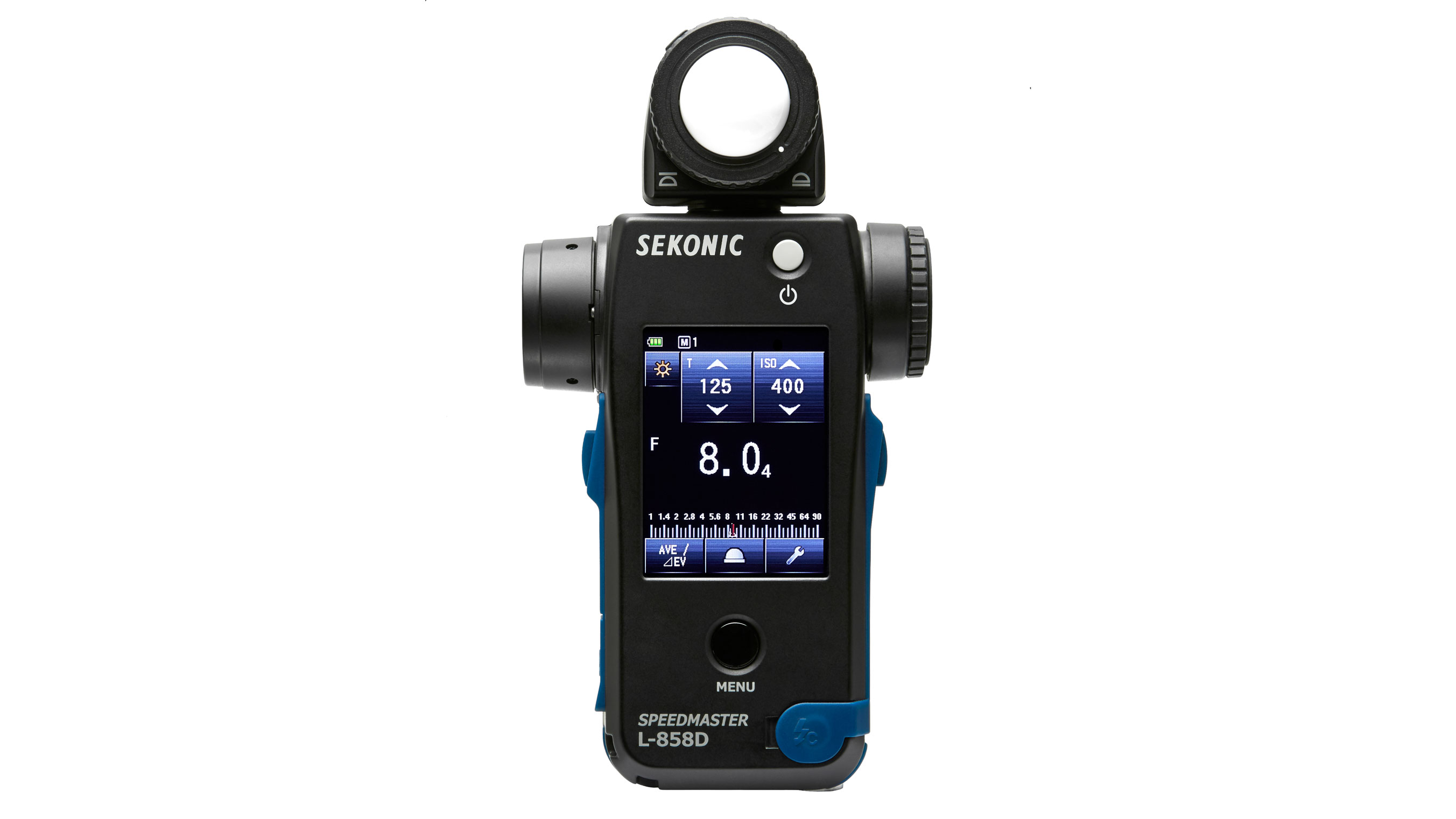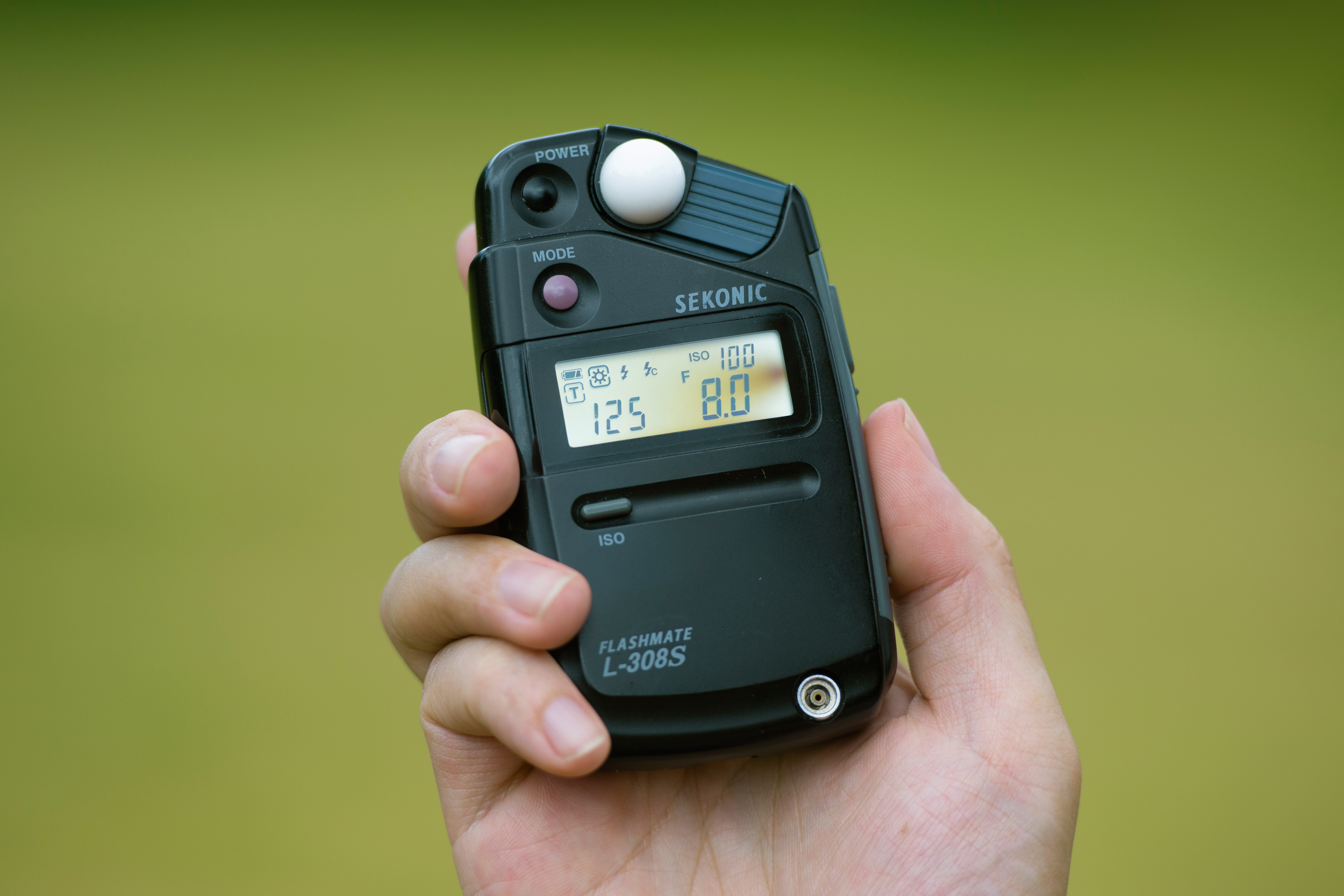
In order to calculate the exposure needed for any given scene – whether that’s a wide-open landscape, a tiny insect on a flower, or a head & shoulders portrait of a friend, the camera needs to know what combination of shutter speed, aperture, and ISO is required to get the job done. This is known as the Exposure Triangle and the parameters it sets rely on a meter to measure the intensity of light first.
Every modern camera has an integral light meter. Without this you simply wouldn’t be able to shoot a well-exposed photo. The light meter in your camera works by reading the light reflecting off the scene, before converting it into an Exposure Value. While a camera’s light meter is good, it’s not always 100% accurate because not all light is reflected with the same intensity. This is why Exposure Compensation is often used to ‘correct’ the camera’s in-built light meter’s minor shortcomings.
Handheld light meters

But there is another way to take a light reading and that’s with a handheld light meter. Rather than reading the light reflected off the subject (although it can do this, too), a handheld light meter is usually used to take an incident light reading. This means it calculates the Exposure Value from the light that’s falling onto the subject, making it more accurate.
Incident light readings

To use a handheld light meter, simply hold it over the subject with the white diffuser (sometimes called the invercone) facing back towards the camera. Having already established that the sensitivity level (ISO) matches that of your camera or film, the light meter will give you a reading based on the available light. You can change the aperture depending on what depth of field you want, and the light meter reading will tell you the corresponding shutter speed.
If you’re working in a studio with flash and a flash meter, you’d fire the flash to get the aperture setting that’s appropriate to the power of the flash heads. Shutter speed isn’t so important with shots lit solely by flash, as it just has to match, or be slower than, the camera’s sync speed.
While an incident light reading from a handheld light meter is very accurate, it’s not always practical or necessary. In the days of film, when photographers couldn’t see results instantly or check histograms, a handheld light meter was invaluable – especially if you were using a camera without a lightmeter built in! These days it’s not an absolute must-have accessory, because even if you are shooting with an older camera without a light meter, you can always confirm the correct exposure with a digital camera and then transfer the settings.
However, some photographers still love that precise measurement that an incident meter reading gives, or just enjoy the process of using them, so they’re still in use today.
Get the Digital Camera World Newsletter
The best camera deals, reviews, product advice, and unmissable photography news, direct to your inbox!
Read more:
• Best light meters
• Best cameras for beginners
• Best camera accessories
• DCW Dictionary of photography
Jon started out as a film-maker, working as a cameraman and video editor before becoming a writer/director. He made corporate & broadcast programmes in the UK and Middle East, and also composed music, writing for TV, radio and cinema. Jon worked as a photographer and journalist alongside this, and took his video skills into magazine publishing, where he edited the Digital Photo magazine for over 15 years. He is an expert in photo editing, video making and camera techniques.

